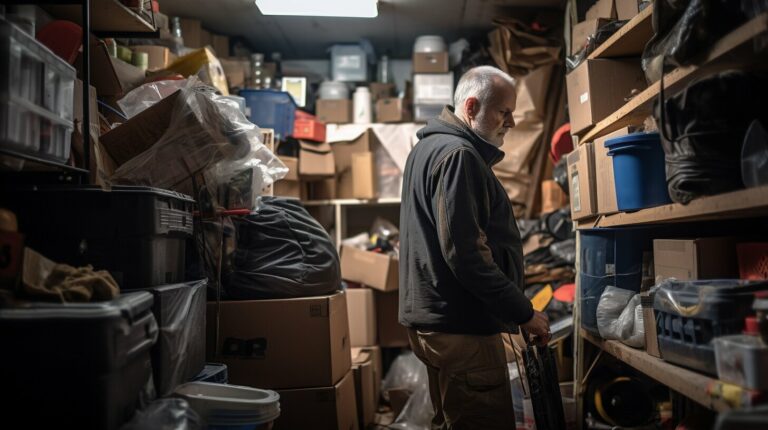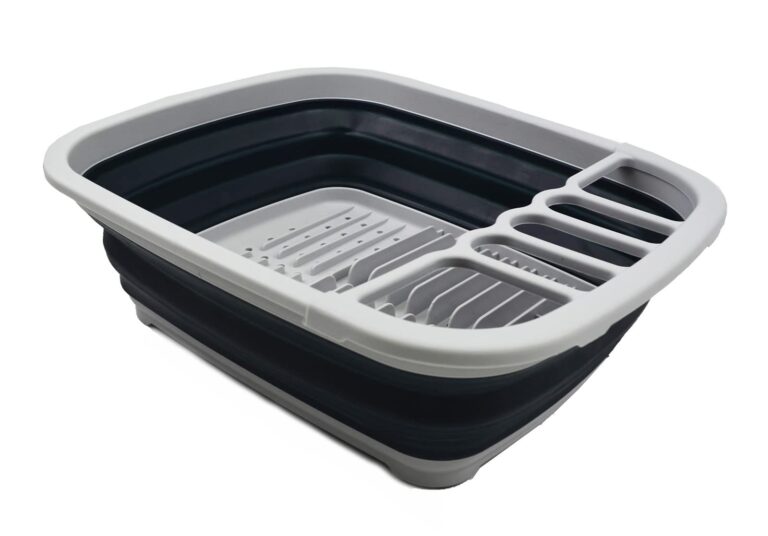Are you tired of a cluttered kitchen that makes cooking and meal prep a hassle? It’s time to declutter your kitchen and create a functional space that you’ll enjoy spending time in. Our ultimate kitchen decluttering checklist will help you streamline your space, simplify your life, and enjoy a clutter-free kitchen.
With our step-by-step guide, you’ll learn how to assess the situation, sort and categorize your items, declutter and let go of unnecessary items, organize and maximize storage, clean and refresh your space, and maintain and sustain your clutter-free kitchen.
Key Takeaways
- Decluttering your kitchen will simplify your life and improve your cooking experience.
- Assess the current situation of your kitchen before starting the decluttering process.
- Sort and categorize your kitchen items to identify items you no longer need or use.
- Maximize your storage space with space-saving solutions.
- Establish a maintenance routine to sustain a clutter-free and functional kitchen.
Assessing the Situation
Before beginning your kitchen decluttering journey, it’s important to assess the current state of your space. Take a few moments to look around and take stock of your kitchen items. Do you notice any problem areas or clutter hotspots?
Visualizing your ideal clutter-free kitchen can also help you determine what needs to be done. Consider what items are essential and which ones are taking up unnecessary space. This step will help you approach the decluttering process with a clear mindset and a plan of action.
Remember, the goal is to create a functional and organized kitchen that makes your life easier and your cooking more enjoyable.
Sorting and Categorizing
Now that you’ve assessed the situation in your kitchen, it’s time to start sorting and categorizing. This step is critical to creating an organized and clutter-free space. Begin by grouping similar items together, such as cookware, utensils, dishes, and pantry items. This process will help you identify items that you no longer need or use.
Once you’ve sorted your items, consider creating designated areas for each category. For example, dedicate a cabinet for pots and pans, a drawer for utensils, and a shelf for dry goods. This organization will make it easier to find what you need when you need it.
If you’re short on space, consider space-saving solutions such as hanging racks or shelf risers. Using these tools can help you maximize your storage and minimize clutter.
Decluttering and Letting Go
Now that you’ve assessed and sorted your kitchen items, it’s time to declutter and let go of the unnecessary items. This step is crucial in creating a functional and organized kitchen space. Begin by asking yourself the following questions:
- When was the last time I used this?
- Does it serve a purpose in my kitchen?
Items that are no longer useful or bring joy to your space should be donated or discarded. It might be challenging to let go of some items, but remember that creating a clutter-free environment is beneficial to your well-being and overall home organization.
Once you’ve identified the items you no longer need, place them in a designated box or bag. Be sure to properly dispose of items that can’t be donated, such as broken appliances or expired pantry items. Donating usable items can be a great way to give back to those in need while also reducing your environmental impact.
Decluttering Tips:
- Start small – If decluttering seems overwhelming, begin with a small area like a single cabinet or drawer.
- Be ruthless – Don’t hold onto items out of guilt or nostalgia.
- Focus on functionality – Keep items that are useful and serve a purpose in your kitchen.
- Set limits – Determine how many of each item you need and stick to that limit.
By following these tips and letting go of the unnecessary items in your kitchen, you can create a clutter-free environment that is both functional and organized.
Organizing and Maximizing Storage
With your clutter sorted and discarded, it’s time to focus on organizing and maximizing your kitchen storage. This step is crucial for maintaining a clutter-free and functional environment.
Tip: Grouping items together in dedicated areas can help minimize time and effort when searching for things.
| Space-saving Tip | Description |
|---|---|
| Drawer Dividers | Use these dividers to categorize and separate items in your drawers. This is great for utensils and cutlery. It will save you from digging through a jumbled mess every time. |
| Shelf Risers | Maximize shelf space by using these risers to create a second tier of storage. This can be very helpful for stacking dishes, mugs, or bowls. |
| Hanging Racks | Hang up bulky items like pots and pans to free up cabinet space. This also gives you quick and easy access to your favorite cooking tools. |
Another space-saving tip is to use the inside of cabinet and pantry doors. You can install hooks or adhesive organizers to store lightweight items like measuring cups, cooking utensils, and spices.
Decluttered and Organized Pantry
Tip: To keep your pantry and cabinets organized, consider using clear, airtight containers. This will help you see your ingredients, keep them fresh, and streamline your space.
Labeling your containers is also a great way to keep things organized and easily accessible. You can easily create beautiful labels using a label maker or printable templates.
By utilizing these space-saving tips, you’ll be amazed at how much more storage you can create. An organized kitchen contributes to a more enjoyable and efficient cooking experience.
Cleaning and Refreshing
Now that you’ve decluttered and organized your kitchen, it’s time to give it a thorough cleaning. A clean and fresh kitchen will enhance the overall decluttered ambiance, and it’s essential for food safety and hygiene. Follow these steps to ensure your kitchen is sparkling clean:
- Wipe down all surfaces with a damp cloth and an all-purpose cleaner. Pay close attention to high-touch areas like countertops, handles, and knobs.
- Clean your appliances, including the stove, oven, microwave, refrigerator, and dishwasher. Refer to the manufacturer’s instructions for specific cleaning recommendations.
- Scrub your sink and faucet with a disinfectant cleaner or a mixture of baking soda and vinegar.
- Wash your dishes, utensils, and cookware. If you have a dishwasher, load it efficiently and run it on a sanitizing cycle.
- Sweep or vacuum the floor, and mop it with a cleaning solution or a steam mop.
After cleaning, you can also refresh your kitchen by adding a few decorative touches, such as a vase of flowers, a colorful rug, or new curtains. However, be mindful not to clutter your newly decluttered space.
Maintaining and Sustaining
Congratulations, you’ve successfully decluttered and organized your kitchen! However, to sustain a clutter-free and functional kitchen in the long run, you must establish a maintenance routine. Here are some space-saving tips and home organization techniques that will help you maintain an orderly kitchen.
Cleaning as You Go
One of the essential habits to practice is cleaning as you go. This means putting items away as soon as you’re finished with them and wiping down surfaces as needed. It may take a little extra effort, but it will save you time and prevent clutter from accumulating.
Regular Reassessment and Decluttering
It’s easy for clutter to build up again, especially in a busy kitchen. To prevent this, regularly reassess your kitchen items and declutter as needed. Don’t be afraid to let go of things that you no longer need or use. This practice will help you maintain a clutter-free space and make room for new items that you may need.
Staying Organized
Now that you’ve decluttered and organized your kitchen, it’s essential to maintain the organization. Utilize space-saving solutions such as drawer dividers, cabinet risers, and hanging racks to keep your items neatly organized. Labeling containers and shelves can also help you find things quickly and easily.
Stick to Your Maintenance Routine
Lastly, stick to your maintenance routine. It may take some time to establish new habits, but the payoff is worth it. Make it a habit to clean and organize your kitchen daily, weekly, and monthly, depending on your schedule. This practice will help you maintain a clutter-free and functional kitchen in the long run.
Conclusion
Congratulations on successfully decluttering your kitchen and creating a functional and organized space! By following the ultimate kitchen decluttering checklist, you’ve taken the first step towards a more peaceful and efficient home. Remember to regularly reassess and declutter your kitchen to maintain its clutter-free ambiance.
Implementing habits like cleaning as you go, staying organized, and using space-saving solutions will help you sustain the clutter-free environment you’ve created. With a little effort, you can enjoy the benefits of a functional and organized kitchen for years to come.
Thank you for following our ultimate kitchen decluttering checklist. We hope it has helped you simplify your life and enhance your home organization. Good luck and happy decluttering!
FAQ
Q: How often should I declutter my kitchen?
A: It is recommended to declutter your kitchen at least once a year to keep it organized and clutter-free. However, you can also do mini decluttering sessions every few months to maintain a tidy space.
Q: What should I do with items I no longer need in my kitchen?
A: If you have items in your kitchen that you no longer need, you have a few options. You can donate them to a local charity or organization, sell them online, or give them to friends or family members who might find them useful.
Q: How can I maximize storage in a small kitchen?
A: In a small kitchen, maximizing storage is essential. You can utilize vertical space by installing shelves or hanging racks, use drawer dividers to separate items, and invest in space-saving organizers like magnetic spice racks or foldable cutting boards.
Q: What are some quick cleaning tips for a clutter-free kitchen?
A: To maintain a clutter-free kitchen, it’s important to keep it clean. Some quick cleaning tips include wiping down countertops after each use, washing dishes immediately, and regularly sweeping or vacuuming the floor. Establishing a cleaning routine will make it easier to keep your kitchen tidy.
Q: How do I prevent clutter from building up in my kitchen?
A: To prevent clutter from building up, it’s important to establish good habits. Clean as you go, put items back in their designated places after use, and regularly reassess your kitchen to declutter any items that are no longer needed. Keeping your kitchen organized will help prevent clutter from accumulating.


